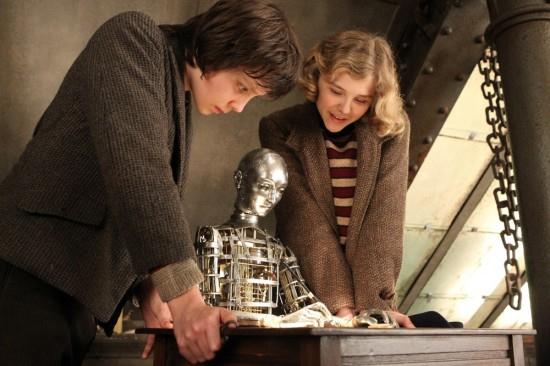2011 was a backwards looking year for film, and only in recent weeks have we begun to climb out of our nostalgic holes and emerge rejuvenated.
Hollywood is historically bad at correcting former mistakes, and at the dawn of each new technological advancement in film, we forget how to run or even walk and start by crawling once again.
2011’s culprit was 3-D, which bombarded us in more movies than any year in history. The words “Shot in 3-D” nearly lost their meaning, and the technology was almost considered dead, written off as another rising and falling fad in the cycle of Hollywood gimmickry.
But as films like “Hugo” finally emerge, we get a good sense not just of how 3-D can improve the visual aesthetic of a film but how it can actually be incorporated to tell stories differently. And interestingly enough, this growth is part of a Hollywood cycle all its own.
Dating back to the advent of sound, color or CGI, critics were there to judge the technology as no more than a gimmick. Sound was only a way to make bawdy musicals, color was only used to make pretty travelogues and epics, and CGI was a cheap way to accomplish what great cinematographers, special effects and makeup artists had done for years. Hollywood is treating 3-D and its surcharge in the same way. Studios milked these gimmicks for years before finally making something of convincing quality.
But before long, sound, color and digital pictures began reinventing the wheel, redefining the ways in which a story was told based on the new technological capabilities. Films made in these mediums told stories that silent, black and white and non-CGI movies could not.
Martin Scorsese does in “Hugo” what James Cameron could not in “Avatar.” He doesn’t just make “Hugo” look beautiful but conveys development and depth by making the 3-D work in his favor. Scorsese explores the endless depth of a train station to show how the whole movie will be seen from a child’s eyes. He even sends a train hurtling at the screen to reimagine what early movie audiences felt when they saw some of the first moving images.
Then it is perhaps not a coincidence that Scorsese and several other directors this year did not use modern ideas to make forward looking films but in fact reveled in cinematic nostalgia.
What have been the great 21st century movies of the year?
“Midnight in Paris” and “Hugo” were both nostalgia projects for legendary veteran directors, each fantasizing about a time when the artists were magical and the world was alive and colorful rather than drab and gritty like some movies today.
“War Horse” and “Super 8” are both homages to spectacle driven masterpieces of the past, with Spielberg emulating John Ford in his war epic and J.J. Abrams copying, well, Spielberg, in his children’s sci-fi.
“Drive” is dripping in ‘80s electronica, and “The Artist” is literally a silent film. Even movies like “The Tree of Life” and “The Descendants” deal with themes large enough to be timeless.
On the other hand, “Moneyball” and its computerized, capitalistic mindset to baseball come to mind. Then there’s “Contagion,” which wasn’t just a pandemic movie but a pandemic movie in the digital age. Or maybe the dark comedy in “50/50” best reflects modern attitudes.
Yet none of those are as striking candidates as “The Social Network” or “Up in the Air.” Perhaps “The Girl With the Dragon Tattoo” and “Young Adult,” not coincidentally by the same two directors, will step in as big contenders to define the year.
But this reveling in the past is already trickling into next year, with 3-D up-converts of “Titanic,” “Beauty and the Beast” and “Star Wars: The Phantom Menace” planned for re-release.
With some great films in 2011, we’ve now proved we know where we started and can see the road to the future. But with too many bad and mediocre ones, let’s pick a path and stop letting new innovations get us so lost.
